Worship in the Orthodox Church today is largely associated with the Divine Liturgy of St. John Chrysostom, the veneration of icons, and Byzantine chant. Ubiquitous in the Orthodox world, for many, this is often presumed as being the only rite handed down to the faithful, and furthermore, some believe that the Church has always practiced the Byzantine Rite alone, and that only after the schism, divergence in worship was introduced. This could not be further from the truth. Since the beginning of the Church, there existed various rites such as the Alexandrian, Eastern and Western Syriac, Armenian, and Latin Rites. It was only after the Great Schism that the Byzantine Rite emerged as the sole rite practiced in the Orthodox Church. This remained the case until 1926, when Bishop Alexis of Grodno, received Fr. Huszno and Fr. Pietruska into the Church, while preserving an adapted Western Liturgy. For the first time in centuries, the Western Rite was reintroduced into the Orthodox Church. The Western Rite has the potential to serve as an instrument to evangelize to those “who were attracted by our Orthodox Faith but could not find a congenial home in the spiritual world of Eastern Christendom.” [1] “Edict on the Western Rite.” The Word, Vol. 2, No. 9 (September 1958), p. 23. However, the Western Rite has seen limited adoption in the Orthodox West. In the Antiochian Orthodox Christian Archdiocese of North America, as of 2011, there are 24 Western Rite parishes with 1,416 faithful, compared to the total of 267 parishes with 59,245 parishioners. [2] Hughes, Edward. “Who Are We.” With What Zeal, edited by John W. Fenton, self-published, 2023, p. 242. n the Russian Orthodox Church Outside of Russia (ROCOR) there are 22 Western Rite parishes compared to the worldwide total of 500+ parishes. Outside of America there are 9 Orthodox Western Rite Communities: 5 in Europe and 4 spread across Oceania and Canada. [3] “Directory of Western Rite Orthodox Parishes and Local Groups.” Western Rite Orthodox Information, www.westernorthodox.info/parishes/. Accessed 26 December 2024. However, the Romanian Orthodox Church in Western Europe alone has over 500 parishes. Despite the apparent advantage of Western Rite in evangelizing, the Western Rite is a minority in the Orthodox West. What has prevented the Orthodox West from adopting the Western Rite? Why has it not become the primary tool for evangelization in a land that was once Orthodox under the Western Rite?
The Western Rite, while ancient in the West, was not widely celebrated in the Church for over eight centuries, aside from isolated communities, such as the Monastery of Almafinon on the Holy Mountain. Despite this, the Western Rite as celebrated today is nascent when compared to its ancient counterpart. The first modern Western Rite liturgy was the Overbeck Liturgy, a modified Tridentine Mass of 1570 with the Trisagion hymn and epiclesis inserted. This was approved in 1871 by the Russian Church; however, it was not celebrated until 1960. Since then, numerous liturgies have been introduced for the Western Rite in the 20th century including but not limited to: Sarum Liturgy, English Liturgy, Liturgy of Saint Tikhon, Liturgy of Saint Gregory, and Liturgy of Saint Germanus. These liturgies fall into two categories: translations of pre-schism liturgies with insertions to fill any gaps, such as the Liturgy of Saint Germanus, and post-schism liturgies, with non-Orthodox teachings removed, and with insertion of epiclesis and Trisagion, such as the Liturgy of Saint Tikhon. The modern Western Rite is not only a recent introduction, but still a work in progress. Patriarch Sergei, in a letter to Vladimir Lossky in 1946, posits:
The Western rite accepted by us should be looked upon as a first step which was hurriedly put together and thus it is subject to modifications on the basis of further experience. For example, some write to me that our Western Rite people are confused on the subjects of the veneration of icons and the restriction of Holy Eucharist only to Church members. Probably, there are a number of items in the text of the services and rites in need of revision. In other words, our existing version of the Western Orthodox liturgy (the texts, rites and customs) cannot be considered as the final established form and the only acceptable one. [4] “Patriarkh Sergii i ego dukhovnoye nasledstvo.” [The Patriarch Sergius and His Spiritual Legacy.] Moscow Patriarchate, M., 1946, pp. 72-74.
Seventy years after Patriarch Sergei’s letter, there are still several liturgies celebrated within the Western Rite, including several within the same jurisdiction. Patriarch Sergei’s position would lead us to conclude that the Western Rite has not reached a “final established form”, unlike the Byzantine Rite. Similarly, it was only in 1962 that the Antiochian Orthodox Church Western Rite Vichariate established common service books: the 1958 English Missal, the Breviarium Monasticum, and the Orthodox Ritual. Even today, “where pastoral needs arise for various rites or blessings are lacking, permission may be sought to use texts from the three-volume work, The Roman Ritual.” [5] Fenton, John W. “Survey of the Liturgical Books.” With What Zeal, edited by John W. Fenton, self-published, 2023, p. 101. The Western Rite as practiced today is not the same as practiced pre-schism, but instead is a newer rite that is still in its infancy. Today, the largest Western Rite jurisdictions are the Antiochian and ROCOR Western Rite Vicariates. These were founded in 1958 and 2011 respectively. It should be noted that there were Western Rite parishes in communion with a canonical Orthodox Church prior to 1958. However these were short lived unions, such as the union between Old Catholic Bishop Joseph René Vilatte (Mar Timotheos I) in 1890 and the Polish National Church, which did not survive the Second World War. Nonetheless, the Western Rite as we know it today is, in large part, influenced by these two vicariates, both not even a century old. As such, it is very possible that the Western Rite’s lack of adoption is partially due to its recentness. As Metropolitan Anthony (Bashir) of blessed memory stated,
This, then, is our latest project. It may not bear fruit for many years, or it may result very soon in significant action in our church. Give it your study and pray that God may use it to hasten the conversion of the non-Orthodox. [6] “Edict on the Western Rite.” The Word, Vol. 2, No. 9 (September 1958), p. 23.
The Western Rite has had to contend with the polemics and misunderstandings surrounding it. There is animosity or distrust of anything Western in the Byzantine Rite Church by some parishioners. For example, the Very Reverend Father Patrick Cardine of the AOCWRV posits:
I learned to despise the West at the same time I was learning to love the Faith of the Eastern Orthodox Church. The commensurate relationship between scorn for the West and love for the East was no happenstance, nor is it unique to my experience. [7] Cardine, Patrick. “Why the Eastern Orthodox Church Needs the Western Rite.” The Basilian Journal, 2020, stbasilcotc.org.
Based on the wide celebration of western saints in the Byzantine Rite liturgy, the celebration of the Presanctified Liturgy of Pope Saint Gregory the Great, the usage of various western hymns, (such as the Te Deum by Saint Ambrose of Milan) etc., I believe this assessment is somewhat overstated. However, I suspect that polemics against the Western Rite contribute to this sentiment. Some of the polemics waged against the Western Rite are ahistorical, such as notions that the whole Church was “Eastern” prior to the Great Schism, or that the Church has traditionally only had one liturgical rite. While these are given little credence by those who have read Church history, these talking points are often seen in various Western Rite polemical essays and interviews. Another polemic that comes up is that the use of the Western Rite is an Orthodox version of Roman Catholic Uniates. Prima facie, this may seem like a legitimate accusation. However, it can be refuted, given the lack of coercion and how Byzantine Rite and Western Rite faithful share the same theology; There is no disagreement on issues such as the sacraments, papal submission, or the filioque. The doctrinal disputes, such as whether Saint Augustine taught Original Sin or Ancestral Sin, is a more legitimate polemic that adds tension between Byzantine Rite and Western Rite faithful. This is further exacerbated by the incorporation of post-schism elements in some Western Rite jurisdictions, including but not limited to, the celebration of Corpus Christi (established in 1246), or the Seven Sorrows of the Blessed Virgin Mary (first celebrated in the 15th century), devotion to the Sacred Heart of Jesus, along with usage of the rosary, Station of the Cross, etc. This excerpt by Metropolitan Joseph (Al-Zehlaoui) from the 60th anniversary of the founding of the AOCWRV outlines the root of the issue here: “We are trying to incorporate a rite that at its root is wholly Orthodox but has continued to develop over a thousand-year period in separation from the bosom of Orthodoxy.” [8] Al-Zehlaoui, Joseph. “On the 60th Anniversary of the Western Rite Vicariate.” With What Zeal, edited by John W. Fenton, self-published, 2023, p. 233. Incorporating post-schism development into the Orthodox Church is concerning for many in the Byzantine Rite, as these innovations have been expressed in non-Orthodox ways in the Roman See. It should be noted that the ROCOR Western Rite Vicariate does not incorporate these post-schism devotions, but, given that the AOCWRV is now the largest Orthodox Western Rite jurisdiction, it has become associated with the Western Rite as a whole. These polemics and misunderstandings between Byzantine and Western Rite confuse the faithful as well as those inquiring and contribute to existing divisions present in the Church today.
Various jurisdictions have evangelized in the West such as the Russian Church Abroad, the Romanian Orthodox Church, the Antiochian Orthodox Church, and the Greek Orthodox Church. Unlike in the East, where there is one autocephalous Church operating in each territory, western nations, such as the United States, have several jurisdictions serving the faithful. The presence of the shared liturgical rites is one critical element of unity, as noted by Father Alexander Schmemann,
In our state of national divisions, of theological weakness, in the lack of living spiritual and monastic centers, of unpreparedness of our clergy and laity for more articulate doctrinal and spiritual teaching, of absence of a real canonical and pastoral care on the part of the various jurisdictional centers, what holds the Orthodox Church together, assures its real continuity with tradition and gives the hope of a revival is precisely the liturgical tradition. [9] St. Vladimir’s Seminary Quarterly, Vol. 2 – New Series, No. 4, Fall, 1958, pp. 37-38.
A centralized liturgical rite was not present in the early Church, but became the reality after the Great Schism which saw the loss of the Western Rite, as well as Patriarch Theodore Balsamon’s liturgical , in the late 12th century, led to the loss of the Alexandrian and Antiochian rites. For centuries, the Byzantine Rite served as the wellspring of theology for the faithful when education was not readily available, such as under the Turkish Yoke. The introduction of a Western Rite by the Eastern Churches does remove an important link among the jurisdictions present in the Orthodox West. The introduction of the New Calendar has been a great trial for the Church, tragically leading to multiple Old Calendarists groups entering into schism, and introducing a lack of unity in the celebration of the feasts. The revival of the Western Rite poses even greater changes than did the move to the revised Julian Calendar. In addition to the differences in liturgical rites, other changes of the Western Rite include a separate fasting schedule with different prohibitions, a celebration of different feasts throughout the year, (even within the same diocese), usage of instruments during worship, and veneration of statues as icons. The question of whether these practices are valid is a whole separate paper, but these differences are unequivocally polarizing. As Metropolitan Kallistos Ware of blessed memory states about the Western Rite in the UK,
Here in Britain, we Orthodox, few though we are in numbers, are fragmented into a multiplicity of “jurisdictions”; but at least we are united in the use of the same rite – the Divine Liturgy of St. John Chrysostom. If a “western rite” is introduced here, it will add still further to our fragmentation…There is a real danger that “western rite” Orthodox will find themselves cut off and isolated from the rest of the Orthodox around them. [10] The Priest. A Newsletter for the Clergy of the Diocese of San Francisco. Issue No. 5, May 1996.
Although he speaks of Britain specifically, this argument applies to the entirety of the fragmented Orthodox West. The Western Rite is inherently divisive as it removes a critical link that unites existing jurisdictions together in the Orthodox West. Furthermore, the Western Rite has exacerbated this division with the addition of post-schism elements.
Before the ROCOR and Antiochian Orthodox Church Western Rite Vicariates were founded, there were several attempts to receive Western Rite parishes into the Orthodox Church. What happened to these smaller Western Rite communities? Some of these missions were initially successful but would disappear due to external factors; for example, the Polish National Orthodox Church which collapsed after the Second World War. However, there were several others that broke off communion. For example, the Evangelical Catholic Orthodox Church in France (ECOF). Originally established by the Moscow Patriarchate (MP) in 1936, this group was cut off from the MP but then adopted by the ROCOR in 1959, until the repose of Saint John of Shanghai in 1966. Eventually the ECOF would be under the Romanian Orthodox Church jurisdiction from 1972 until 1993, when the Romanian Church broke off communion with the ECOF
over various errors of dogmatic, liturgical and canonical discipline, as well as teachings and practices contrary to universal orthodoxy, which only multiplied with the time continuing again and being brought to our knowledge many times. [11] Arăpașu, Teoctist. “423/3.III.1993.” Received by Bishop Germain de St Denis, 1993.
Some of these parishes stayed with the Romanian Church and became Byzantine Rite. Others joined the Coptic Orthodox Church in 2000 and eventually broke off in 2005, founding the Orthodox Church of the Gauls. [12]Mayer, Jean-François (2014). “ ’We are Westerners and must remain Westerners’: Orthodoxy and Western rites in Western Europe”. In Hämmerli, Maria (ed.). Orthodox … Continue reading Unfortunately this is not an isolated example, as there were several other communities that were briefly in communion with a canonical church, but ultimately would be cut off, such as René Vilatte’s (Mar Timotheos I) Old Catholic community in America that eventually entered into communion with the Jacobites. There was also the Old Catholic Bishop, Arnold Harris Mathew, who was briefly in communion with the Antiochian Church in 1911. Before the establishment of the Western Rite Vicariates, most of the earliest missions adopting a western liturgy disappeared. Another failed mission was driven by Father Julian Joseph Overbeck (1820–1905). Overbeck wanted to create a path for Anglicans to convert to Orthodoxy while maintaining their liturgical practices. This movement succeeded in creating the aforementioned Overbeck Liturgy (an edited Tridentine Mass based on the Book of Common Prayer). However, when negotiating with the Russian Orthodox Church to implement this scheme, the Russian Church requested approval from the Eastern Patriarchs. Ultimately, a protest by the Greek Church thwarted Overbeck’s plans. According to the Western Rite priest, Fr David Abramtsov, several factors led to this failure, such as the Bulgarian Question, preparation for the Russo-Turkish War, and pressure exerted by Great Britain, who viewed Overbeck’s plan as a threat to the Anglican Church. The Anglicans were even successful in having the Ecumenical Patriarchate ban Orthodox proselytism in Britain at this time. [13] Abramtsov, David. “A Brief History of Western Orthodoxy.” With What Zeal, edited by John W. Fenton, self-published, 2023, pp. 57-58. Ultimately, geopolitical factors, lack of support from the Church, and failures to adhere to Orthodox doctrine, led to few of these early Western Rite communities surviving today, a significant blow to the adoption of the Western Rite in the Orthodox West.
In the last five years, there has been a surge in converts to Orthodoxy. According to the OCA Convert survey, more than half the converts who participated converted post Covid. Among this cohort, the following reasons were cited as the largest driving factors for conversion: apostolic succession and authenticity; answers to faith questions; fullness and coherence; and the liturgy. For converts in this survey, the top difficulties were relationships; veneration of the Theotokos; and icons. The Liturgy was listed as the eighth most cited difficulty during conversion, compared to it being the fourth factor with the largest draw. In an interview conducted by Protodeacon Andrei (Psarev), when asked about comparisons to the Roman Catholic Uniates, Bishop Jerome (Shaw) of Manhattan, Vicar of the President for the Administration of Western Rite Parishes (2011-2013) observed, “I would say that the majority of the Western Rite parishioners had already joined the Orthodox Church before they became interested in the Western Rite.” [14] Psarev, Andrei, and Jerome Shaw. “On the Western Rite in the ROCOR.” ROCOR Studies, 22 Feb. 2013. However, from my correspondence with Fr. Patrick Cardine of the AOCWRV, Western Rite parishes are a mix of Roman Catholic and Protestant converts, with unchurched converts becoming a dominant demographic. The Byzantine Rite converts are in the minority. This demographic is in line with the 2023 OCA Convert Survey where 79% of converts came from Western Christian backgrounds; 17.5% were Roman Catholics, 31% were Mainline Protestants and 31.5% were Evangelical Protestant groups, while 20% converted without any church background. [15] 2023 Orthodox Convert Survey; Parish Development Forum. One of the original tenets in the creation of the Antiochian Western Vicariate, was for the “purpose of facilitating the conversion of groups of non-Orthodox Western Christians to the Church.” [16] “Edict on the Western Rite.” The Word, Vol. 2, No. 9 (September 1958), p. 23. Given the Western Rite in ROCOR has struggled to convert Western Christians, while the AOCWRV has been comparable to Byzantine Rite parishes, it appears that the Western Rite has not been more successful in converting non-Orthodox Western Christians compared to the Byzantine Rite. Also noted in the survey, among converts 74% embraced the faith after visiting one or two parishes, suggesting the issue of rite is not so important in the current convert “boom.”
Why has the Western Rite not been widely adopted in the Orthodox West? Those in the Western Rite argue that it is animosity or misunderstandings that hold the Western Rite back from its full potential. As noted by Fr. Patrick, “By casting suspicion on the Western Tradition, we have eschewed the fullness of our own Patrimony, impoverishing and depriving us of what is ours.” [17] Cardine, Patrick. “Why the Eastern Orthodox Church Needs the Western Rite.” The Basilian Journal, 2020, stbasilcotc.org. I would further add that external factors, such as geopolitics and intra-Church relations, have also adversely impacted Western Rite adoption, particularly in Europe, as observed with the challenges faced by Overbeck. Nonetheless, there are several other more critical factors at play. Todays Western Rite is not the same as what was celebrated in Rome prior to 1054. While the same can be said about the Byzantine Rite, the key distinction is that the Byzantine Rite, with many centuries of formation, has been passed down organically to the faithful today. The Western Rite, such as the Overbeck Liturgy, is barely a century old. The modern Gallican liturgy is less than a century old. Simply put, the rite is still in the development phase as compared to the Byzantine Rite. Similarly, the Western Rite jurisdictions in the Church are still young. AOCWRV was founded in 1958 and the ROCOR Western Rite Vicariate in 2011. Standardization of service texts and development of the diaconate take time. The ROCOR Synod of Bishops 2013 decision to halt ordinations has exacerbated this issue and will delay or halt the development of this Vicariate. In addition, the Western Rite is an outlier in the Orthodox West. The Western Rite stands out, unlike other jurisdictions that share the same liturgical rite and other external practices such as fasting rules, hymnography, etc. The AOCWRV’s addition of post-schismatic elements in the rite is polarizing for inquirers and faithful alike. The largest draw of the Orthodox Church for converts is the “Apostolic; Authentic; original; historical; Continuity unchanged; Stability” of the Church. [18] 2023 Orthodox Convert Survey; Parish Development Forum. The post schism roots and elements of the Western Rite, its divisiveness, and recentness, calls into question its authenticity and historicity. This prevents its wider adoption in the land it was designed for.
References
| ↵1 | “Edict on the Western Rite.” The Word, Vol. 2, No. 9 (September 1958), p. 23. |
|---|---|
| ↵2 | Hughes, Edward. “Who Are We.” With What Zeal, edited by John W. Fenton, self-published, 2023, p. 242. |
| ↵3 | “Directory of Western Rite Orthodox Parishes and Local Groups.” Western Rite Orthodox Information, www.westernorthodox.info/parishes/. Accessed 26 December 2024. |
| ↵4 | “Patriarkh Sergii i ego dukhovnoye nasledstvo.” [The Patriarch Sergius and His Spiritual Legacy.] Moscow Patriarchate, M., 1946, pp. 72-74. |
| ↵5 | Fenton, John W. “Survey of the Liturgical Books.” With What Zeal, edited by John W. Fenton, self-published, 2023, p. 101. |
| ↵6 | “Edict on the Western Rite.” The Word, Vol. 2, No. 9 (September 1958), p. 23. |
| ↵7 | Cardine, Patrick. “Why the Eastern Orthodox Church Needs the Western Rite.” The Basilian Journal, 2020, stbasilcotc.org. |
| ↵8 | Al-Zehlaoui, Joseph. “On the 60th Anniversary of the Western Rite Vicariate.” With What Zeal, edited by John W. Fenton, self-published, 2023, p. 233. |
| ↵9 | St. Vladimir’s Seminary Quarterly, Vol. 2 – New Series, No. 4, Fall, 1958, pp. 37-38. |
| ↵10 | The Priest. A Newsletter for the Clergy of the Diocese of San Francisco. Issue No. 5, May 1996. |
| ↵11 | Arăpașu, Teoctist. “423/3.III.1993.” Received by Bishop Germain de St Denis, 1993. |
| ↵12 | Mayer, Jean-François (2014). “ ’We are Westerners and must remain Westerners’: Orthodoxy and Western rites in Western Europe”. In Hämmerli, Maria (ed.). Orthodox identities in western Europe: migration, settlement, and innovation. Farnham [u.a.]: Ashgate. p.277 ISBN 9781409467540. |
| ↵13 | Abramtsov, David. “A Brief History of Western Orthodoxy.” With What Zeal, edited by John W. Fenton, self-published, 2023, pp. 57-58. |
| ↵14 | Psarev, Andrei, and Jerome Shaw. “On the Western Rite in the ROCOR.” ROCOR Studies, 22 Feb. 2013. |
| ↵15 | 2023 Orthodox Convert Survey; Parish Development Forum. |
| ↵16 | “Edict on the Western Rite.” The Word, Vol. 2, No. 9 (September 1958), p. 23. |
| ↵17 | Cardine, Patrick. “Why the Eastern Orthodox Church Needs the Western Rite.” The Basilian Journal, 2020, stbasilcotc.org. |
| ↵18 | 2023 Orthodox Convert Survey; Parish Development Forum. |

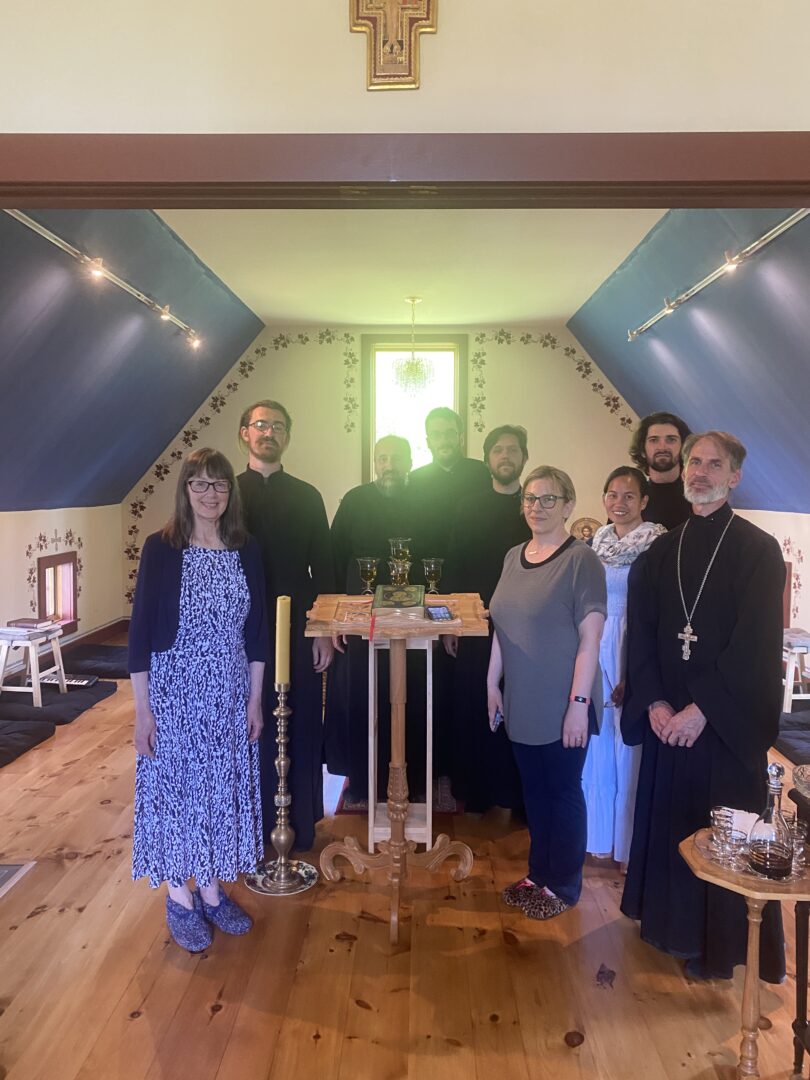
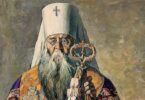
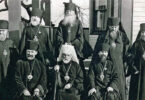


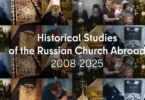

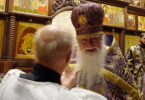


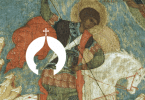
Your central thesis is surely correct: Why would prudent Metropolitans plant a still-developing Eucharistic liturgy (which has famously been cause for ruinous feuds in the Churches from which they emerged) into the sacred ground of their own ancient and stable Eastern Churches? Moreover, when you account the Eastern Church’s Divine Liturgy to be the living heart of her sacred character, her antiquity, her stability, and her *unity* (as Met. Kallistos has said), such a decision is akin to sending Lenin in a sealed boxcar into Holy Rus’. You have distilled this thorny and intractable conversation down to a few trenchant paragraphs. Please accept my gratitude.
Father bless. There is a lot of controversy surrounding the Western Rite today. I avoided making any assertion on “should” or “valid” as this was outside the scope of the paper, but more importantly, not something I can speak to. From my investigation, I do see significant hurdles for the Western Rite to overcome and do have apprehensions in certain aspects of specific iterations of it.
This is now outside the investigation, however, I have observed the introduction of “Americana” styled melodies such as the Appalachian Pachal Troparion in American congregations. Leveraging a Mozarebic or Gregorian style melody of the various tones while maintaining the Byzantine Rite may serve the same “purpose of facilitating the conversion of groups of non-Orthodox Western Christians to the Church.”
In Christ,
Theodore
The article mentions a Polish National Orthodox Church which is said to have collapsed after the war. I have not heard of something by that name, but there is an autocephalous Polish Orthodox Church extant today, which as far as I can tell is the same one from before the war. What is the article talking about, is there something in the history not easily accessible in English language media?
I believe it was the reference to the Polish Orthodox Church in Exile.
The Polish Catholic National Church, which split from Rome in 1923, was briefly in union with the autocephalous Polish Orthodox Church. During this time, the Polish Catholic National Church was referred to as the “Polish Orthodox National Church.” Reverend David F. Abramtsov has an essay that covers some of the it history, “A Brief History of Western Orthodoxy” which can be found here: https://orthodoxlynchburg.com/what-we-believe/western-rite-101/a-brief-history-of-western-orthodoxy/. Father Deacon Andrei Psarev also covers some of the history in this article: https://www.rocorstudies.org/2013/06/16/on-the-western-liturgical-tradition/.
In Christ,
Theodore